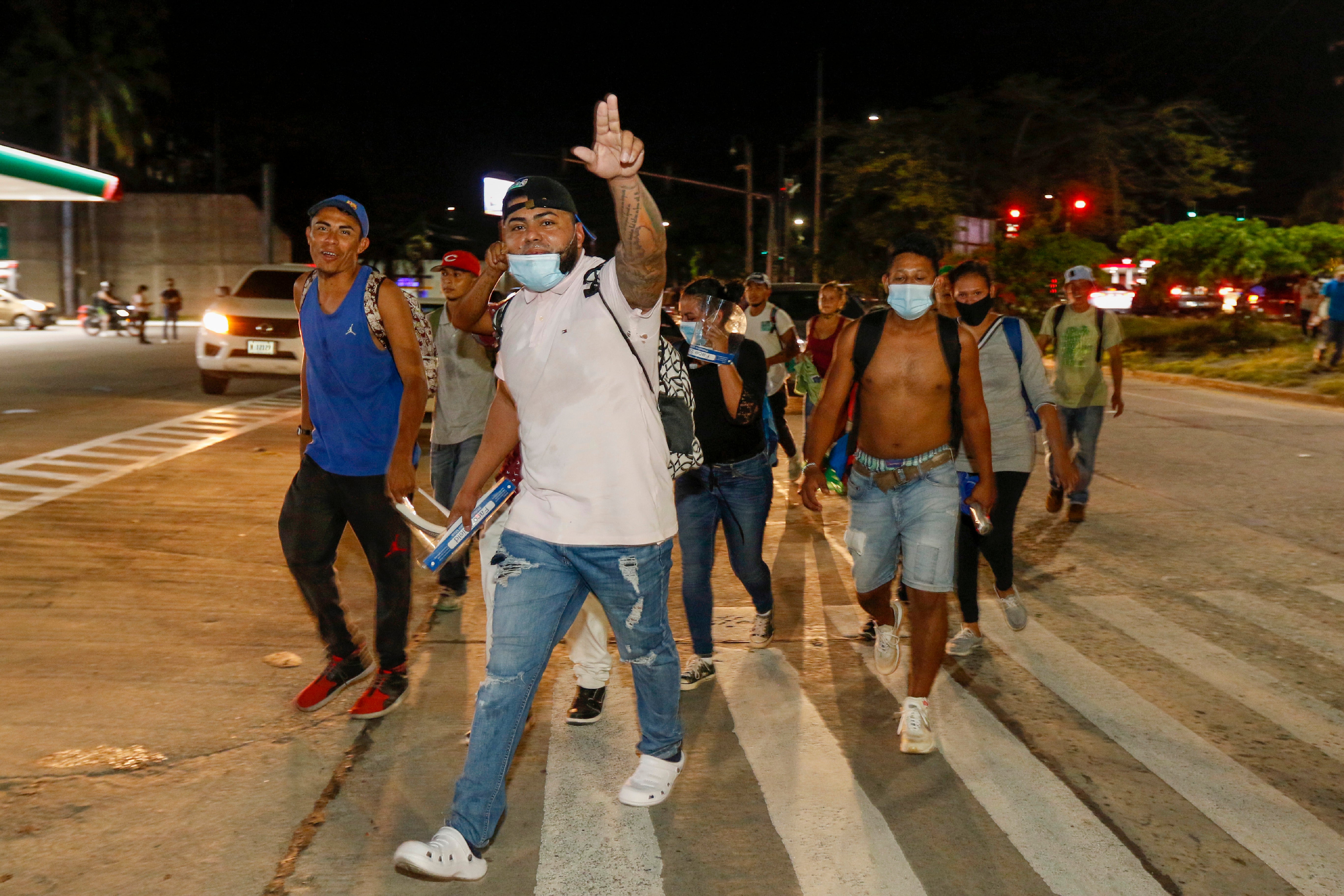Hundreds of migrants set out from Honduras amid pandemic
Hundreds of migrants have begun walking from this northern Honduras city toward the Guatemala border testing a well-trod migration route now in times of the novel coronavirus

Your support helps us to tell the story
From reproductive rights to climate change to Big Tech, The Independent is on the ground when the story is developing. Whether it's investigating the financials of Elon Musk's pro-Trump PAC or producing our latest documentary, 'The A Word', which shines a light on the American women fighting for reproductive rights, we know how important it is to parse out the facts from the messaging.
At such a critical moment in US history, we need reporters on the ground. Your donation allows us to keep sending journalists to speak to both sides of the story.
The Independent is trusted by Americans across the entire political spectrum. And unlike many other quality news outlets, we choose not to lock Americans out of our reporting and analysis with paywalls. We believe quality journalism should be available to everyone, paid for by those who can afford it.
Your support makes all the difference.Hundreds of migrants began walking Wednesday night from this city in northern Honduras toward the Guatemala border testing a well-trod migration route now in times of the novel coronavirus.
Calls for a new migrant caravan to leave from the San Pedro Sula bus station Oct. 1 have been circulating on social media for weeks. The caravan comes just two weeks after Guatemala reopened its borders after keeping them sealed for months to slow the spread of COVID-19.
But the majority of the migrants who gathered Wednesday decided not to wait for October, instead setting out in the dark of night carrying knapsacks and many wearing masks. The groups quickly strung out along the highway with some catching rides while others continued to walk toward the Guatemala border.
Governments throughout the region made it known they were watching Wednesday. Mexico’s immigration agency said in a statement that it would enforce “safe, orderly and legal” migration and not do anything to promote the formation of a migrant caravan. The U.S. Embassy in Honduras said via Twitter Wednesday that migration to the U.S. was more difficult than ever right now and more dangerous because of COVID-19.
But the push factors driving migrants from Central America certainly haven’t eased during the pandemic. The lack of jobs and struggle for families to put food on the table have only worsened.
The U.N.’s International Labour Organization said Wednesday that at least 34 million jobs have been lost in Latin America due to the coronavirus pandemic. The ILO lists Latin America and the Caribbean as the worst-hit region in the world in terms of lost working hours, with a drop of 20.9% in the first three quarters of the year.
The flow of migrants north from Central America had slowed dramatically during the pandemic as countries throughout the region closed their borders. Most migrant shelters along the principle routes north through Mexico closed their doors to new arrivals as they tried to keep the virus from spreading to vulnerable migrant populations. Mexico and the United States deported hundreds of migrants back to their home countries to try to empty detention centers.
The U.S. government used the pandemic to effectively shut down the asylum system at its southern border.
Mexico tried to bus asylum seekers stuck at its northern border south. Mexico has typically offered migrants the opportunity to seek asylum there, but many have their minds set on the United States. Migrants are also likely to find it more difficult to find work in Mexico now as the economy is expected to contract 10% this year due to the impact of the pandemic.
The departure of the group Wednesday night was reminiscent of a migrant caravan that formed two years ago shortly before U.S. midterm elections. It became a hot issue in the campaign fueling anti-immigrant rhetoric.
Under pressure from the U.S. government last year, Mexico took a more aggressive approach toward migrants. It deployed its National Guard to intercept them on highways and worked to keep massive caravans seen in previous years from forming.
Central American migrants began travelling in large groups in recent years, seeking safety in numbers and in some cases avoiding the cost of smugglers.
__
AP writer Christopher Sherman in Mexico City contributed to this report.